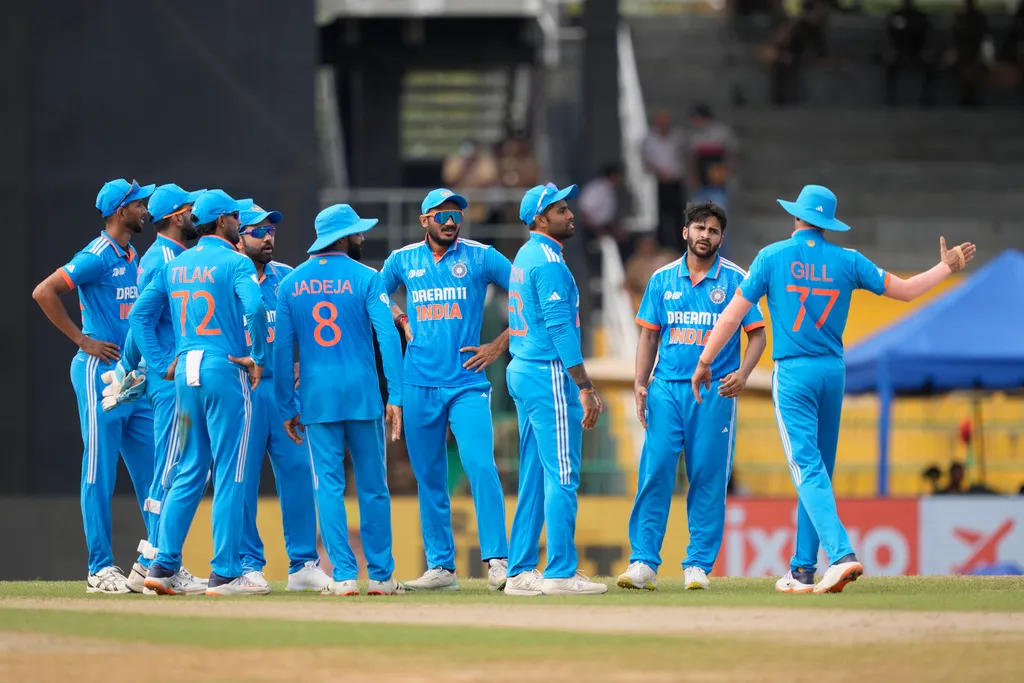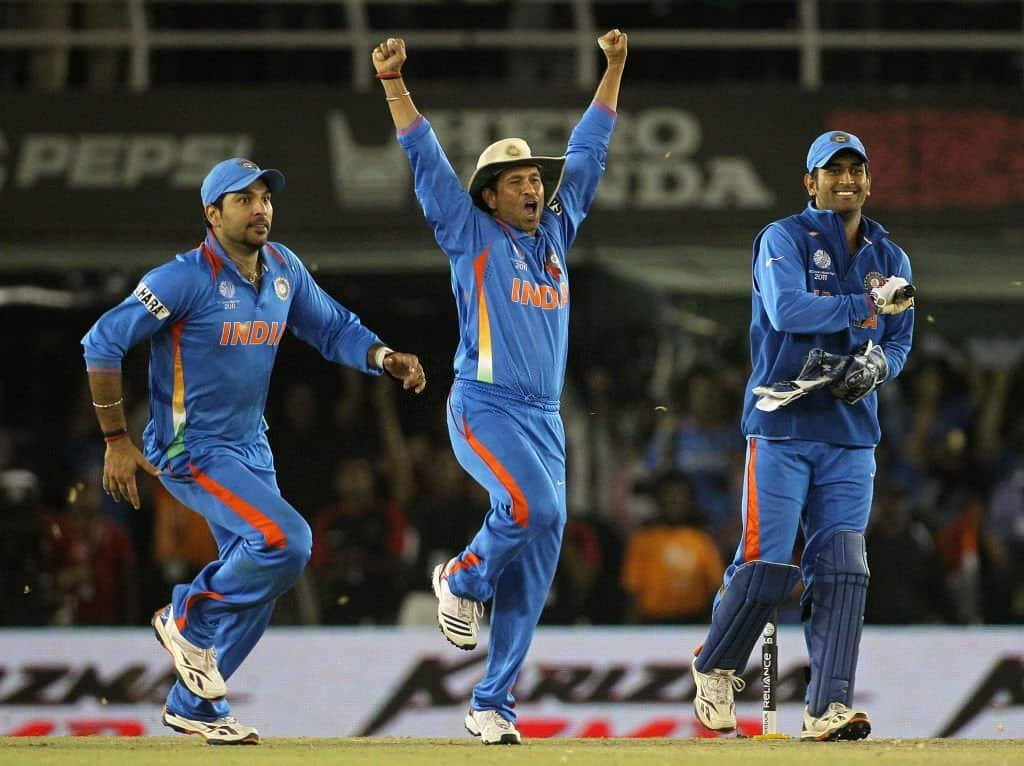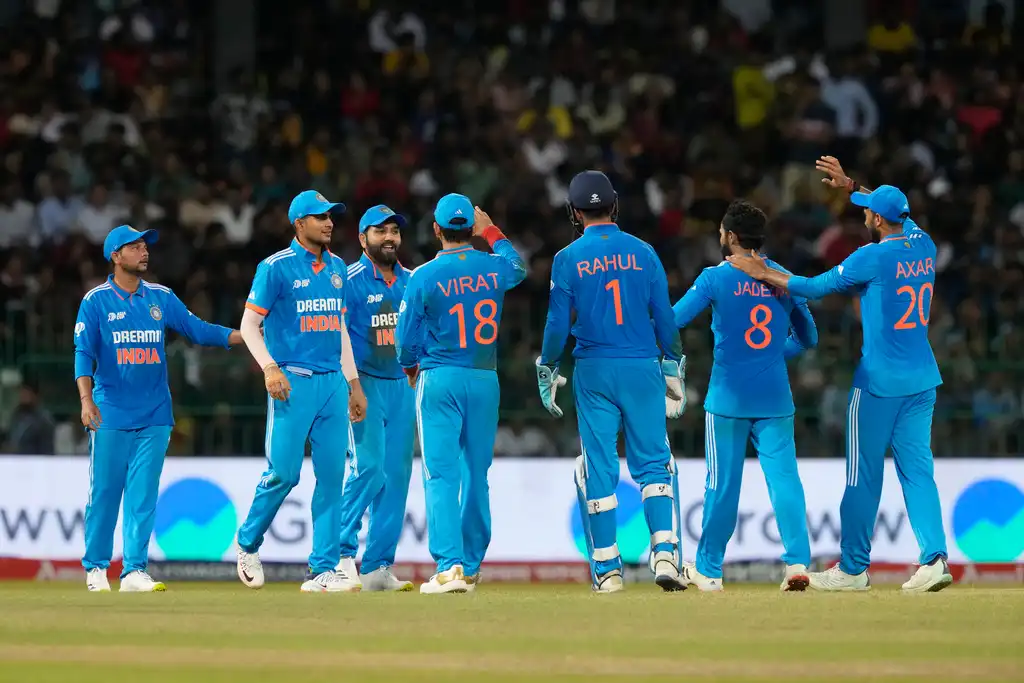 India are currently the number one ranked team in ODIs (Source: AP Photos)
India are currently the number one ranked team in ODIs (Source: AP Photos)
The ICC ranking system is one of the most significant discussion points amongst cricket fans. But it involves quite a few mathematical calculations. However, in this article, we explain the ranking method of ICC and suggest a more straightforward approach to do the same.
Moving ahead in this article we will try and explain the point calculation method used for teams as per the International Cricket Council.
ICC Points Calculation Method for Teams
Time Period
The ranking of the teams is based on their performance throughout the last three to four years. In the case of matches that are played earlier than 24 months, the weightage of the points amounts to 50%. For the matches played, within the last 24 months, the weightage of the points amounts to 100%. This cycle starts and ends in May each year. Every year in May, the matches played in the period between three and four years earlier get removed.
Point System
To assign points to the winning team after a match, the ratings of the two teams just ahead of the match are taken into consideration. Now, to calculate the points at stake in a match, the ratings of the teams ahead of the game get the biggest traction.
There are two systems of calculating points.
1.If the difference in ratings of the teams ahead of the match is less than 40 points, then:
| Match Result | Points Earned |
|---|---|
| Win | Rating of the opposition + 50 |
| Loss | Rating of the opposition - 50 |
| Tie | Rating of the opposition |
To get a grasp of the system, let us take an example. Suppose India is playing against Australia, so first of all let us take a look at the current rating and points of the two teams.
| Team | Points | Rating |
|---|---|---|
| India | 5,085 | 116 |
| Australia | 3,462 | 112 |
If India wins, they will get Australia's current rating + 50 points as a reward, i.e., India will get, 112+50 = 162 points. After the match, India's total points tally will stand at 5,247 points. On the other hand, if India loses, then 162 points will be deducted from their total points and it will stand at 4,923.
If Australia wins, they will get, 116+50 = 166 points and their total points tally will stand at 3,628 points. Likewise, Australia will lose 166 points if they are defeated in the game. Their points will stand at 3,300 points.
If the game is tied, India will be awarded 162 points and Australia will be awarded 166 points.
2. If the gap between the ratings of the teams ahead of the match is more than 40 points then:
| Match Result | Points Earned |
|---|---|
| Higher Rated Team Wins | Their own rating + 10 |
| Lower Rated Team Loses | Their own rating - 10 |
| Higher Rated Team Ties | Their own rating -40 |
| Lower Rated Team Ties | Their own rating + 40 |
| Higher Rated Team Loses | Their own rating - 90 |
| Lower Rated Team Wins | Their own rating + 90 |
Example
For this example, we will take into consideration India and West Indies. Let us take a look at the ratings and points of the two teams.
| Team | Points | Rating |
|---|---|---|
| India | 5,085 | 116 |
| West Indies | 2,582 | 68 |
If India Wins -
- India gets 116 + 10 = 126 Points, and their tally stands at 5,211.
If India Loses -
- They lose 116+90 = 206 points, and their tally goes to 4,879.
If West Indies Wins -
- They get 68 + 90 = 158 points, and their total tally goes to 2,740.
If West Indies Loses -
- They lose 116 + 10 = 126 points, and their tally goes down to 2, 456.
If the match ends in a tie -
- India lose 116 + 40 = 156 points and their total point count goes down to 4,929.
- West Indies gains 68 + 40 = 108 points and their total point goes up to 2, 690.
Assigning Ratings
After the game is played the total points are divided by the total number of matches played in the time period.
If we consider the case of India winning against Australia, their rating after the match will be -
(5,085 + 162) / 45, i.e., 5,247/45, which stands for 116.6 rating. India played 44 matches ahead of that game and that is the 45th match, so the total point was divided by 45.
Note: The points earned in this system depend on the rating of the opponent. So, at the start of the system, base ratings were assigned to each team.
OneCricket's Substitute Method
Now, the system mentioned above is quite complex. So, we at OneCricket have devised a simpler method to rank the teams.
Let us assume that this system started after the 2019 World Cup, so we will assign base ratings to the teams that participated in the tournament. For the associate nations, we will assign a standard rating to get them started.
The Ratings of these teams will be dependent on their rankings in the tournament, with 100 being the highest. So, now let us see the rankings immediately after the 2019 World Cup.
- England - 100 Points
- New Zealand - 90 Points
- India - 75 Points
- Australia - 75 Points
- Pakistan - 60 Points
- Sri Lanka - 50 Points
- South Africa - 40 Points
- Bangladesh - 30 Points
- West Indies - 20 Points
- Afghanistan - 10 Points
For the associate nations, the starting rating point will be 5.
Now, when two teams will play, the points will depend on the margin of win. In case of a win by batting first the points gained will be like -
- Less than 25 Runs- 5 Points
- More than 25 but less than 50 Runs - 10 Points
- More than 50 but less than 100 runs - 15 Points
- More than 100 but less than 150 runs - 20 points
- More than 150 but less than 200 runs - 25 Points
- More than 200 runs - 30 Points
In case of a win by batting second, the points gained will be
- Win by 1 Wicket - 5 Points
- Win by 2 Wickets - 10 Points
- Win by 3-4 Wickets - 15 Points
- Win by 5-6 Wickets - 20 Points
- Win by 7-8 Wickets - 25 Points
- Win by 9 -10 Wickets - 30 Points
Now, there should be a reward for defeating a higher ranked team. So, if the difference of rating point between the two teams before the game is more than 50, and if the lower ranked team wins, then the points gained from the match will be doubled.
For the losing team, they will lose double the points as designated by the margin.
In order to get the ratings we will keep the ICC System intact of total points divided by total matches played.
Example
Suppose Afghanistan plays England, immediately after the resetting of the ranks and for the sake of the new ranking system, let us consider they get 30 points by winning the match. Then their actual gain will be 30*2 = 60 Points from the match.
On the other hand, England will lose 60 points.
So after the match England's point will go down to 100 - 60 = 40, whereas Afghanistan's will go up to 10 + 60 = 70. And as for the cycle, we will go with the ICC norm. Where matches played earlier than 24 months will bear 50% weightage and matches played within 24 months will bear 100% weightage.


.jpg?type=mq)
.jpg?type=mq)


